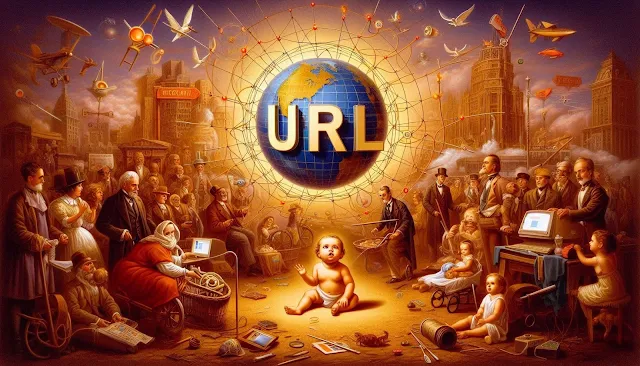The Birth of the URL: A Historical Overview
Understanding URLs and Their Importance in Cybersecurity
In today's digital age, URLs (Uniform Resource Locators) play a crucial role in navigating the internet. However, they also present significant cybersecurity challenges. Understanding the structure and function of URLs and common cybersecurity threats associated with them is essential for protecting personal and organizational data. This blog delves into the anatomy of URLs, common cyber threats, and best practices for URL security.
The URL, or Uniform Resource Locator, is a fundamental component of the World Wide Web, serving as the address system for accessing online resources. Its creation is deeply intertwined with the development of the web itself. This blog explores the origins of the URL, its evolution, and its significance in the digital age.
The Birth of the World Wide Web
The URL story begins with the invention of the World Wide Web by Sir Tim Berners-Lee in 1989. At the time, Berners-Lee was working at CERN, the European Organization for Nuclear Research, where scientists needed a way to share research documents easily across different computer systems.
The Need for a Uniform Address System
In the early days of the internet, accessing resources was cumbersome and required knowledge of specific file paths and network protocols. There was no standardized way to locate and retrieve documents across the diverse network of computers. This lack of standardization led Berners-Lee to conceptualize a more efficient system.
The Creation of the URL
In 1991, Tim Berners-Lee proposed the first version of the URL as part of his larger vision for the World Wide Web, which also included the Hypertext Transfer Protocol (HTTP) and Hypertext Markup Language (HTML). The URL was designed to provide a simple and consistent way to access online resources.
Key Components of a URL
The structure of a URL is composed of several key components, each serving a specific purpose:
- Protocol: Specifies the method used to access the resource. Common protocols include
http,https,ftp, andmailto. - Domain Name: Identifies the server hosting the resource. For example,
www.example.com. - Path: Specifies the exact location of the resource on the server. For instance,
/path/to/resource. - Query Parameters: Allow for the passing of data to the server. These are appended to the URL using a question mark, such as
?query=parameters. - Fragment: Points to a specific section within the resource, indicated by a hash symbol, like
#fragment.
Evolution and Standardization
As the web grew, the need for standardized URLs became more apparent. In 1994, the Internet Engineering Task Force (IETF) published RFC 1738, which formally defined the syntax and semantics of URLs. This standardization ensured compatibility and interoperability across different systems and platforms.
The Impact of URLs on the Digital World
URLs revolutionized the way people accessed information online. They made it possible to link documents, creating a web of interconnected resources that could be easily navigated. This interconnectivity is the essence of the World Wide Web, enabling the seamless sharing of information across the globe.
The Future of URLs
While the basic structure of URLs has remained consistent, their usage and implementation continue to evolve. Advances in web technology, such as the introduction of Internationalized Domain Names (IDNs) and improvements in security protocols, have expanded the capabilities of URLs.
Conclusion
The creation of the URL was a pivotal moment in the history of the internet. By providing a standardized address system, URLs made the web accessible and navigable, paving the way for the digital revolution. As we continue to innovate and expand the capabilities of the web, the humble URL remains a cornerstone of our digital lives.
Key Takeaways:
- Tim Berners-Lee's Vision: The URL was part of Berners-Lee's broader vision for a unified and accessible World Wide Web.
- Standardization: The formal definition and standardization of URLs were crucial for ensuring compatibility and interoperability across different systems.
- Interconnectivity: URLs enabled the creation of a web of interconnected resources, transforming the way we access and share information.




.jpeg)

Comments